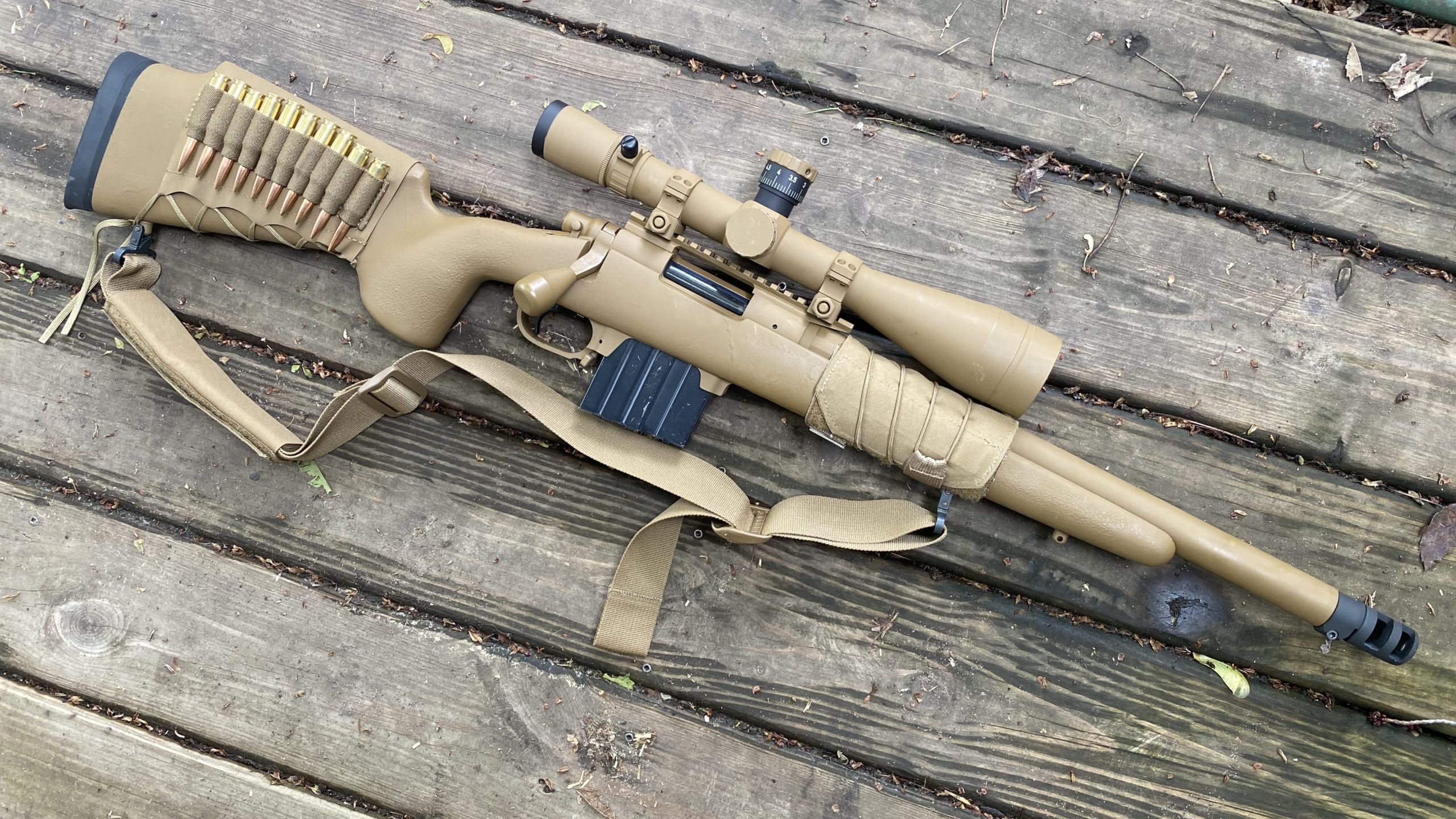
TTAG reader and fellow Marksmanship Training Center member Luke Skywalker (not his real name, but he wanted to tell his friends he made me call him that) had a question on barrel taper and just what it does for a rifle.
“My question is about barrel taper. I see lots of guys talking contour and I’ve been shooting heavy Savage varmint (contour) at 1K for years and I never needed a thicker tube. I have seen lots of the guns in your articles and you’ve got some wild tapers and lengths. Does any certain taper make a difference for long range? How about short range, like 300 yards? Does it really make a difference if I’ve got a pencil or a pry bar out there?”
Master Skywalker is a good long range shooter and uses the Old Republic’s favorite cartridge, the .308 Win. (Yes, I know Luke was not alive in the Old Republic era, and no it’s not nerdy to know that about probably the most popular character in modern cinema…next to his dad.)
I’m a reluctantly-converted 6.5 shooter by necessity, however my old favorite, and the one I will probably end up returning to as my age climbs and nostalgia grows, is the .308 Win. I fondly remember my first 1/4” five-shot group with a .308 and I held on to that round for a very long time…but I digress.
Skywalker’s rifle is a custom job and I really like it. It’s an American Rifle Company Mausingfield action in a Foundation stock (the material here appears to a high-compression and similar to linen micarta) with a 20-inch 1:8 twist barrel, source unknown to me.
It’s a Savage shank, but he declined to tell me where it came from, though I have my suspicions as to its origin. His glass is a US Optics 5-25, though not the same as my own version of that optic as seen in my TTAG articles, which is now called the Foundation series (not related at all to his stock). He’s a hell of a shooter and he really does the .308 Win a service. Something about bulls-eyeing womp rats, or so he tells me.
As such an accomplished shooter, I wonder why it is that he asked me about contour at all. I shoot a variety of contours in my line of work and across my work guns, but I’m not a guru by any stretch.
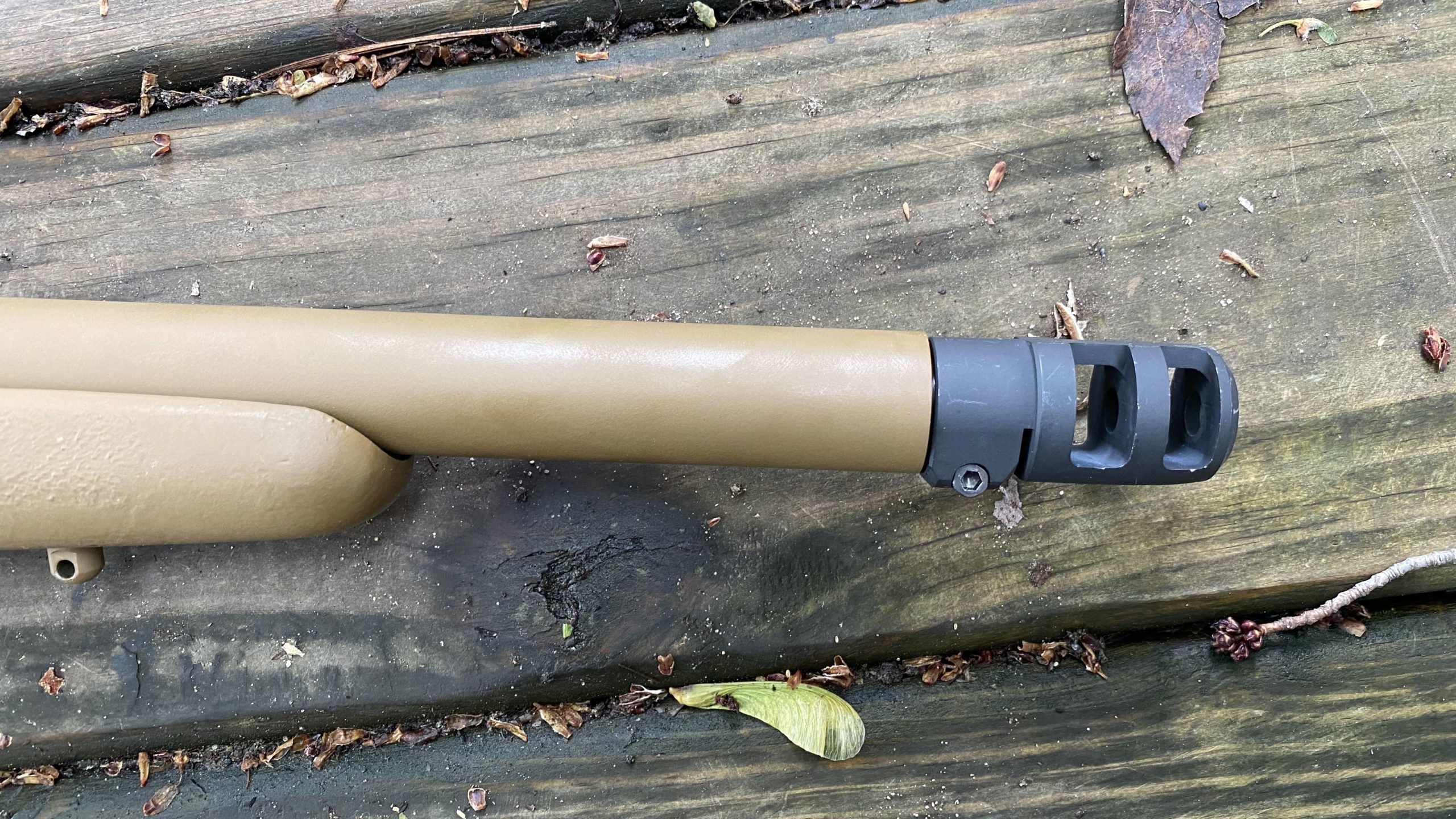
The major thing that contour addresses is heat. I know this may seem like a dumb answer, but it’s really true. Weight is a factor when it involves the transport of a rifle, but that’s secondary in that you can save weight using a carbon fiber barrel while also having a heavy contour.
Heat dissipation is critical here in that a heavy or thick steel barrel takes longer to get hot and usually cools slightly faster due to a greater surface area, thus letting a shooter have a wider window in which to avoid the negative effects of heat buildup. These negatives are stringing, group migration, and wide/unpredictable groups.
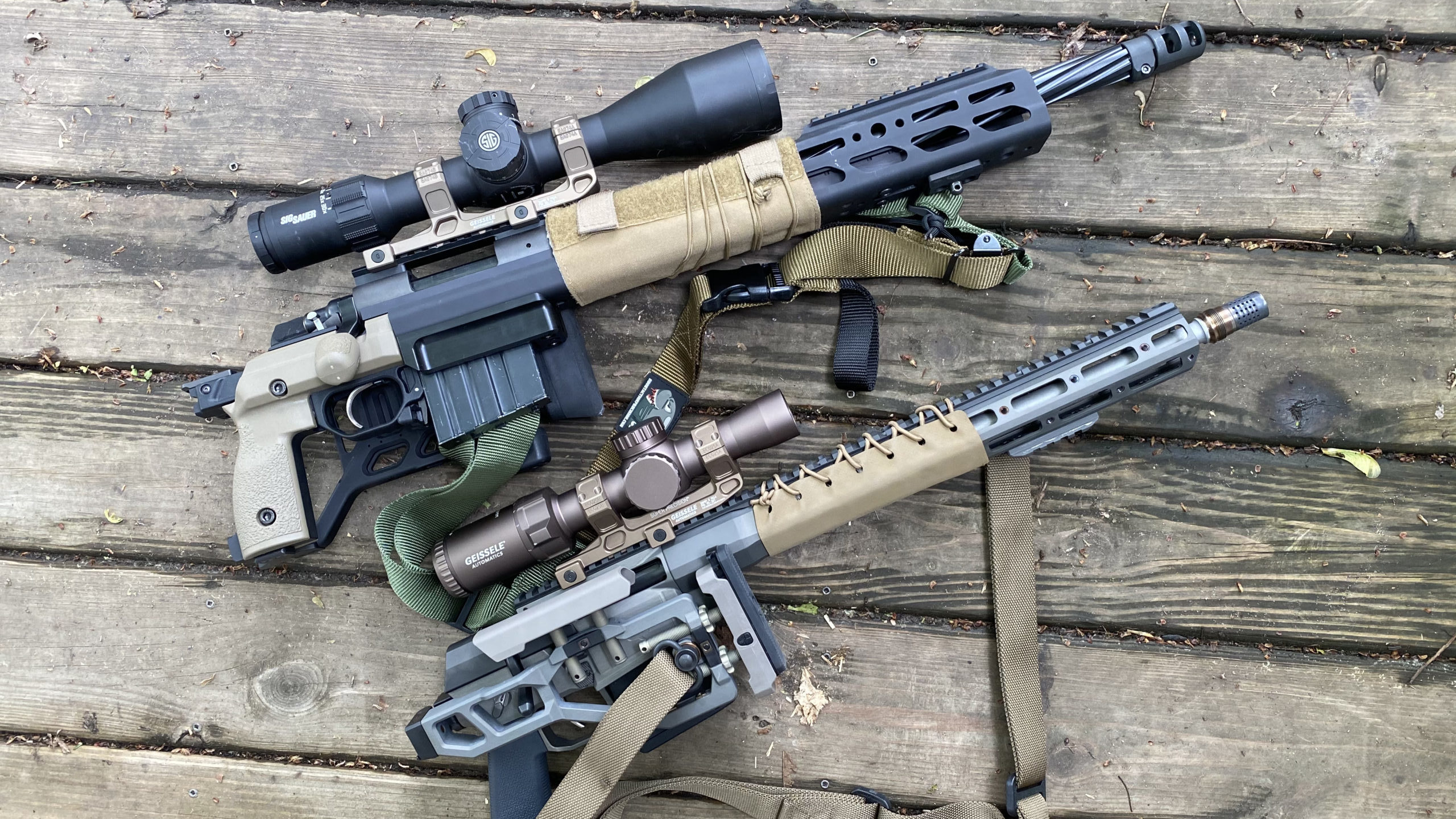
A skinny barrel thus heats up faster, which in turn results in a decrease in accuracy and other aforementioned detriments. When it comes to steel barrels, a light contour saves weight at the sacrifice of consistency from shot to shot, though this is really relative to the shooter and intended end use.
An elk hunter with a featherweight .300 Win Mag may only ever fire one shot a season, and for that reason it’s folly to attempt five-shot groups that take heat buildup into account. The elk hunter is best advised to go to the range and let his barrel cool for as long as possible between not just groups, but individual shots.

The match shooter has heat to worry about if he is shooting benchrest or PRS. These guns fire a number or rounds, often in rapid succession and do well to have barrels that can handle the heat consistently. They are often quite thick, but can end up so thick that they render the rifle hard to move.
My heaviest rifle is 21 lbs. and is a beast to drag around. I like how accurate it is, but I’m not a fan of the weight. I am not going to change it, however, as I already have lighter rifles and it’s not my intent to make all of them the same.
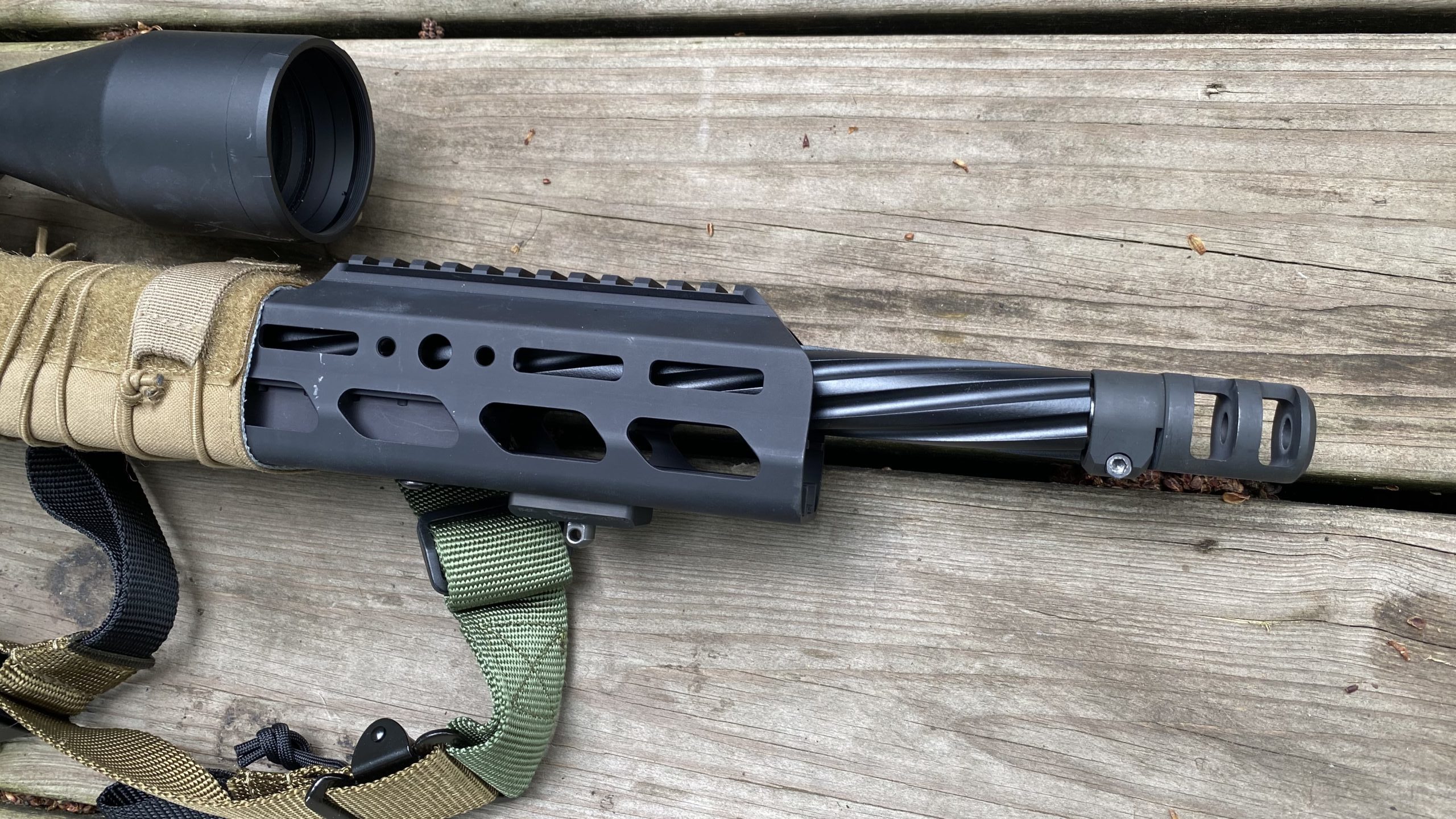
To answer the latter questions posed by Skywalker, I don’t think that there is one specific contour that excels at any given range. A heavier barrel — steel or carbon fiber — will in theory produce better results over a skinny one given equal round count and distance.
Can I say that a Medium Palma is ALWAYS better than an M24 contour? No. Can I concluded that every M24 contour barrel is better than every Savage Varmint? Again, no. A barrel’s contour is really a subjective thing in that shooter’s end use and preference needs to be factored in as well. In a manner of speaking, if it ain’t broke….
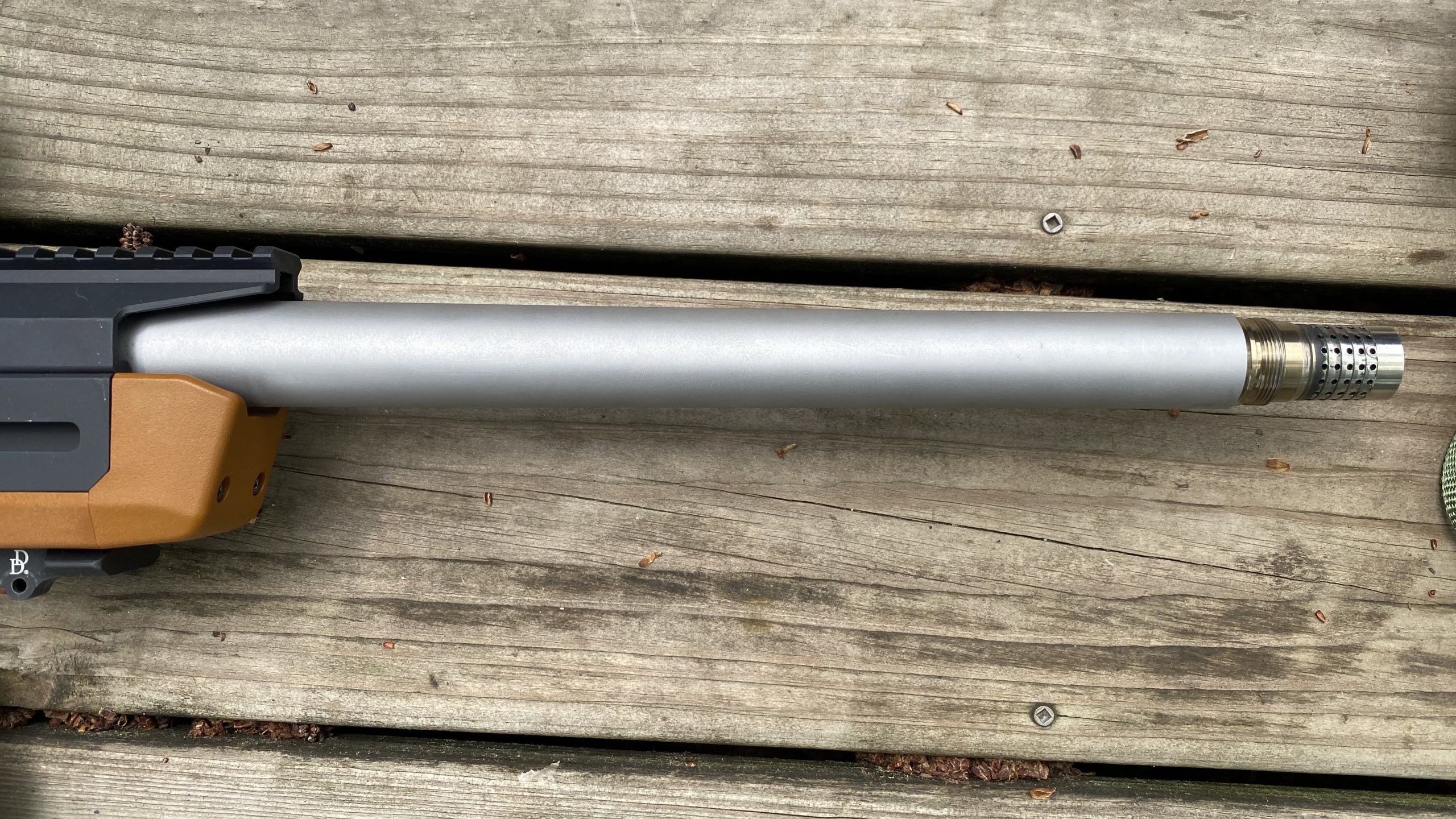
When it comes to shorter barrels, the effect of contour is minimized to a degree as a shorter barrel of equal contour to a longer barrel is always stiffer. This is a constant and you’ll see my work rifles, such as the spiral flute 6.5 barrel in this article, are quite thick and short. They deliver impressive accuracy at the cost of a few feet-per-second.
Weight savings isn’t very important on a stationary gun, and where necessary, like on the all-tan stalking rifle, I use carbon fiber for weight savings while having an equally thick contour. The all-tan gun weighs just six pounds where the black-and-tan is 15.5 lbs. They are equally accurate on paper, but the difference in handling is like night and day.
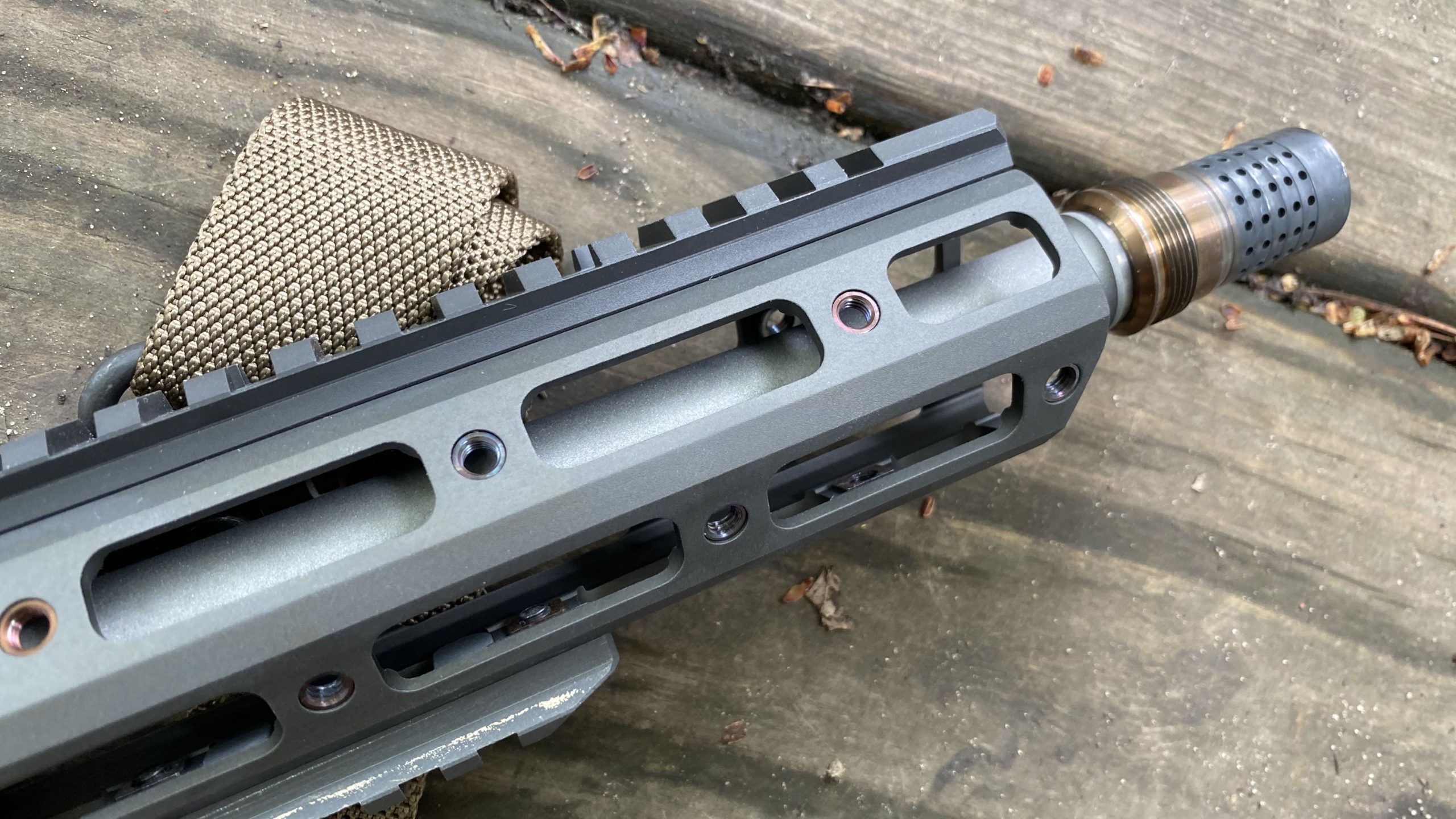
In the end, there isn’t one best contour for any given distance. I think that you’ll see few ‘pencil’ thin barrels in serious, multi-round competitions and 21-pound guns hunting out in the field will be as rare as hen’s teeth.
Short range and long range shooting both benefit from accuracy, and you can get away with less barrel at shorter ranges, though you may still want to have enough barrel to maintain at least a couple follow-ups if things go pear-shaped.




I’m no expert but you neglected to discuss barrel harmonics. The barrel vibrates with each shot. Thicker barrels may vibrate with shorter, faster shock waves, thus producing better accuracy. Also, barrel surface area is key to heat dissipation. A thicker barrel will have more surface area, allowing greater heat dissipation and perhaps better accuracy when rounds are fired more quickly. The shorter barrel will be stiffer and may produce better accuracy all other things held constant.
CACinAZ,
I came to say what you said pretty much verbatim.
The general rule-of-thumb as I understand it:
1) Go with thin barrels on hunting rifles that you will carry around afield. Those thin barrels weigh less, are more comfortable to lug around, and usually produce acceptable accuracy for hunting purposes at realistic/ethical hunting ranges.
2) Go with thick barrels on precision target/competition rifles that you do NOT carry around. Those thick barrels weigh more which does not matter since you do not lug them around. And those thick barrels (if manufactured correctly) produce outstanding accuracy at very long ranges (well out to 1,000 yards and beyond).
If you want a rifle for both rolls, then you would probably want a rifle with a medium thickness barrel which would be compromise between maximum possible weight savings and maximum possible accuracy.
Agreed except the idea that a thicker barrel cools faster because of surface area.
This is not true, Thinner barrels cool faster as they have less mass.
A heavy barrel is slow to heat up because the mass is absorbing the heat, but it is also storing it longer and therefore slower to cool down.
Surface area is also a horrible way to cool as the hot air surrounding the metal acts as insulation.
Stainless also takes longer to heat up and cool down as its thermal conductivity is less than carbon steel.
Carbon fiber barrels will be even worse as the carbon fiber around the barrel will insulate the inside steel and hold the heat. The barrel may feel cold on the outside but the bore will reach higher temp faster.
I would argue the biggest difference between heavy and thin barrel contour is the barrel whip that happens. Look at the Enfields and the accuracy effect with pressure on the barrel. Notice the trend to float barrels.
A thick heavy barrel will be less influenced by variations in this whip thus producing more repeatable events resulting in tighter groups, particularly in ammo that is not 100% identical.
bob,
Great information. Thank you for the contribution.
Re thermal conductivity of carbon fiber, it depends heavily on the orientation of the fiber mats and how they have been laid down. I sent to recall at least one barrel manufacturer stating their lamination / application process was optimized for heat dissipation.
It’s really a volume to surface area ratio problem:greater surface area does radiate faster, but the heat propagates through the material at a certain rate, so the gain in volume from increasing the diameter doesn’t give that much advantage in heat dissipation because the greater volume holds more heat in the first place.
Honestly, I think it depends mostly on your application here but I’m not of the opinion that heat dissipation is a big problem for most bolt guns in most cases. For something that’s going to be fired repeatedly in a competition heat dissipation isn’t my concern so much as I’m concerned about how fast the barrel is affected by the heat it picks up from being fired which is where a thicker barrel tends, IME, to give you more cushion.
Personally, because I have to hoof this thing long distances I went with a short, thick barrel and decided to push a faster round for “the flatness”.
Sure, it’s a compromise to some degree to shoot a “20 inch” (~19.5″ IRL) barrel for long range work but I also don’t have to lug around a 20+ pound rifle and the accuracy is good enough for the purpose, which isn’t trying to kill anything near the limits of what the rifle can do in terms of getting on the target. IMHO, for that purpose I’d rather show up with less rifle but less tired and more ready to shoot than show up more tired, less ready and with “more rifle”.
Heat dissipation, weight, and harmonics (agree with CACinAZ) are the reasons for tapering. I’ve always preferred fluting. But the way you want your rifle to look is a factor in this too. JP ent. sells heat sinks for cooling too.
Prndll,
You know, I never considered fluting before. The right kind of fluting should significantly increase barrel stiffness and surface area (cooling) without adding much additional weight over a thin-profile barrel.
Thanks for shoving me into another firearms-related rabbit hole.
Carbon fiber wrapped barrels are another method of gaining light weight but stiff barrels.
Southern Cross,
I am aware of that and would personally avoid carbon-fiber wrapped barrels because that carbon-fiber would tend to insulate the barrel and prevent heat dissipation. Proper fluting/ribbing would provide the best of both worlds.
Fluting is a great way to tackle the surface area to volume ration!
Lots of concise useful information in the comments section.
The comment section is the true gold of TTAG…
“Josh Wayner is a Michigan native, active competitor, Grand Valley State University alumni, troublemaker, and fiction author.”
Unless Josh is several people at once, he cannot be a Grand Valley State University alumni. Alumni is plural. Alumnus (or alumna if Josh is a woman) is the singular form.
Well, it’s either covered by “fiction author”, multiple personalities, or societal insistence on misusing a word until the dictionary caves and adds an ‘alternate’ definition.
The politically correct form would be “alumnx” these days.
Brian Litz, noted rocket scientist, balistician and National champion shooter says in one of his books that the Heavy Palma contour bbl had the least point of impact shift of 10 bbl contours he tested using 50 shot slow fire strings…for what it’s worth.
It’s worth something.
But I would have to ask, how many different barrels using the same contour did he test, made from how many different materials and from how many manufacturers? Any individual barrel’s performance will be a combination of design, materials, and manufacturing processes (including item-to-item variations on the same line). Testing a single barrel provides no way to properly deconvolve the various factors.
In other words, is the Heavy Palma an optimum design, or did that particular one he had, simply work better than the others he had?
Thin rifle barrels are easier to drive into the ground if you need a dog stake.
Application has to be at the forefront of this decision
tacomhq.com/structured-barrels/ looks mighty interesting.
THANK FOR NICE INFORMATION, VISIT OUR WEBSITE : https://telkomuniversity.ac.id/
Comments are closed.